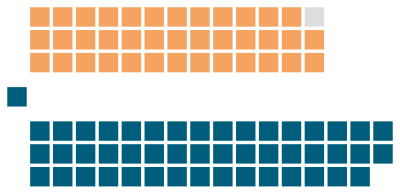Western Canada
Western Canada, also referred to as the Western provinces, Canadian West or the Western provinces of Canada, and commonly known within Canada as the West, is a Canadian region that includes the four western provinces just north of the Canada–United States border namely (from west to east) British Columbia, Alberta, Saskatchewan and Manitoba.[3] The people of the region are often referred to as "Western Canadians" or "Westerners", and though diverse from province to province are largely seen as being collectively distinct from other Canadians along cultural, linguistic, socioeconomic, geographic and political lines. They account for approximately 32% of Canada's total population.
The region is further subdivided geographically and culturally between British Columbia, which is mostly on the western side of the Canadian Rockies and often referred to as the "west coast", and the "Prairie Provinces" (commonly known as "the Prairies"), which include those provinces on the eastern side of the Rockies yet west of Ontario - Alberta, Saskatchewan and Manitoba. Alberta and British Columbia are also sometimes subcategorized together, either as the "Rockie Provinces" or "mountain provinces" owing to both hosting large swathes of the mountain range, or due to shared socioeconomic factors such as their highly urbanized populations (three of Canada's five largest cities are Calgary, Edmonton, and Vancouver) and significant interprovincial mobility between the two. Alberta and Saskatchewan, having once been united as a single territory, are also sometimes subcategorized together due to shared political and economic histories, as well as similar historic migratory patterns from Eastern Europe.
The capital cities of the four western provinces, from west to east, are:
With the exception of Winnipeg, which is the largest city in Manitoba, all other Western provincial capitals are in the second-largest metropolitan areas of their respective province.
Western Canada is the traditional territory of Indigenous and First Nations predating the arrival of European colonization. As Britain colonized the West, it established treaties with various First Nations, took control of other areas without opposition and fought with other First Nations for control of Western Canada. Not all lands were ceded by the First Nations to British control and land claims are still ongoing.
In 1858, the British government established the Colony of British Columbia, governing that part of Canada still known as British Columbia. The English government established the Hudson's Bay Company which controlled most of the current area of Western Canada, northern Ontario and northern Quebec, the area known as Rupert's Land and the North-Western Territory. In 1870, the British government transferred the lands of the company to Canada. The area of Western Canada not within British Columbia was established as the Northwest Territories under Canadian control. The Western provinces other than British Columbia were established from areas of the Northwest Territories:
Energy and agriculture are Western Canada's dominant industries – and this region, with only 11 million inhabitants, is one of the world's largest net exporters of both energy and agricultural commodities. Approximate breakdown:[23]
Energy:
Agriculture:



